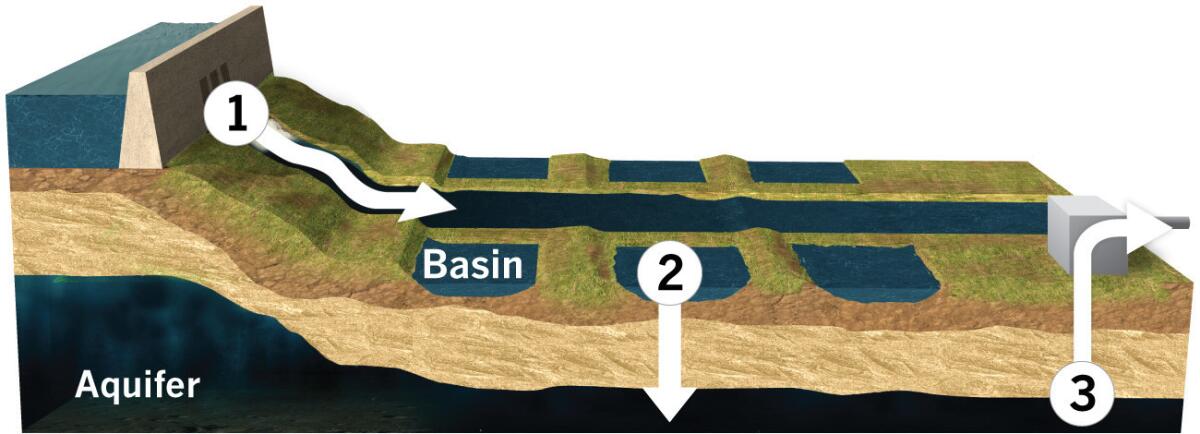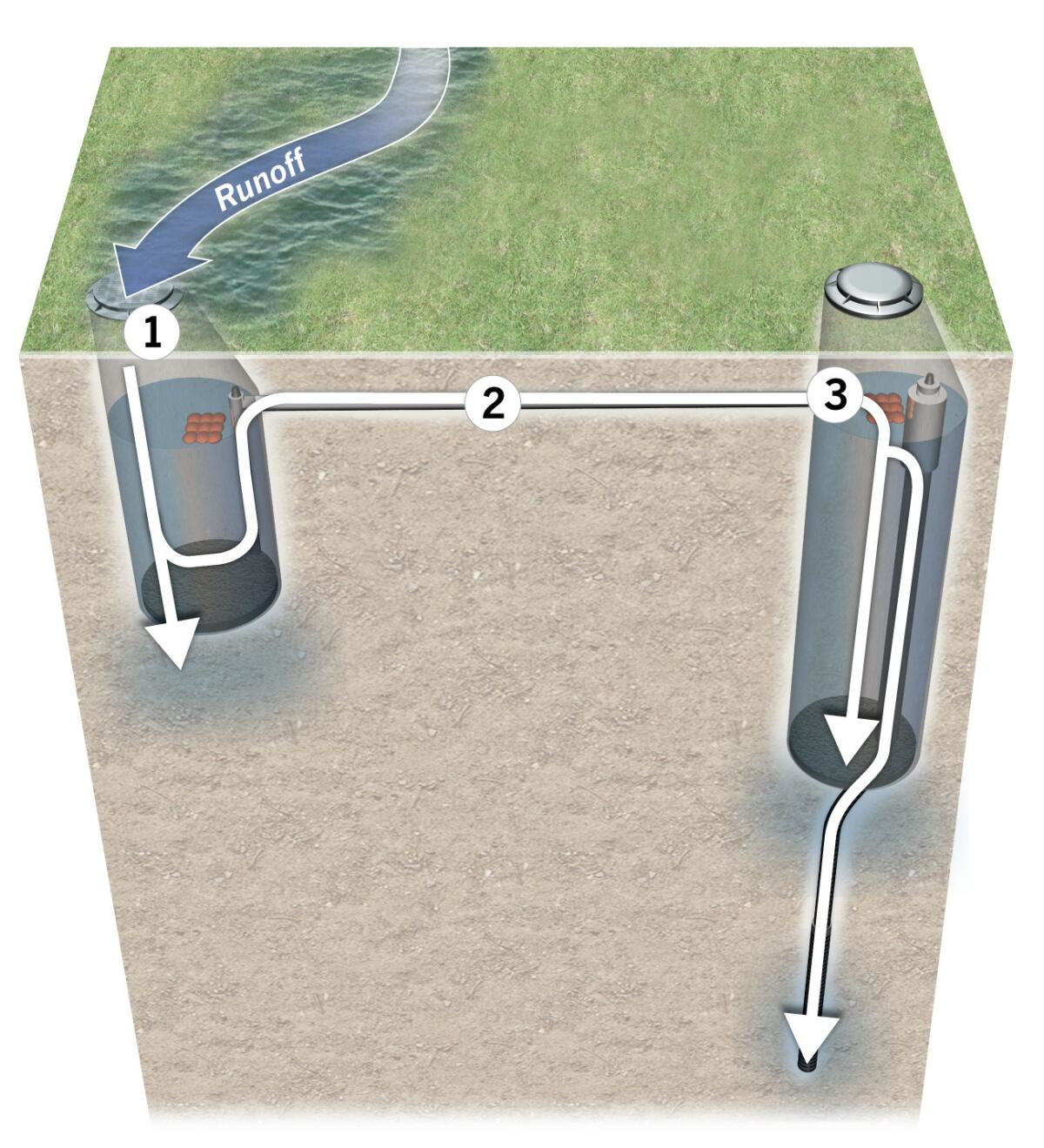Capturing stormwater in the Los Angeles Basin
Dams in the front range of the San Gabriel Mountains capture runoff that is conveyed to a network of spreading grounds that recharge local aquifers with an average of 200,000 acre feet of water a year — or enough to supply 400,000 households. A recent study found that an array of projects could significantly boost stormwater collection in the Los Angeles Basin, particularly in the Los Angeles River watershed.
How spreading grounds work
Spreading grounds are shallow basins used to replenish groundwater supplies.
1. Dams release water that is conveyed to spreading grounds.
2. Sandy soils at the spreading grounds naturally filter water as it seeps through the basins’ porous bottom into the ground.
3. Water is pumped from the aquifer into the water treatment and distribution system.

Laurel Canyon Boulevard project
The $3 million project in Pacoima is one of a number of projects Los Angeles is undertaking to increase stormwater capture in the San Fernando Valley. The green streets project will collect urban runoff from 123 acres, including roads and a middle school campus.
1. Runoff is directed to an underground, concrete intake chamber.
2. After the first filtration, runoff flows to the next chamber.
3. Deeper intake chamber filters water a second time as it percolates into the ground.

Sources: Los Angeles County Department of Public Works, Los Angeles Department of Water and Power, Torrent Resources.
Sign up for Essential California
The most important California stories and recommendations in your inbox every morning.
You may occasionally receive promotional content from the Los Angeles Times.









